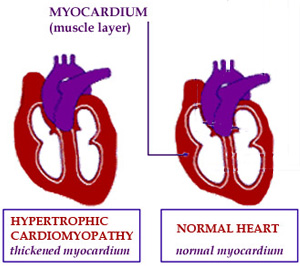
Friedreich's Ataxia (FRDA)
Signs and Symptoms
In Friedreich's ataxia (FRDA), the sequence and severity of symptoms varies greatly from person to person.1 Ataxia, or loss of balance and coordination, is usually the first symptom noticed. Other symptoms — including cardiac problems — may appear later.
See Medical Management for information about dealing with these symptoms.
Ataxia, weakness and spasticity
Usually, ataxia first affects the legs and torso, causing frequent tripping, poor performance in sports or just an unsteady walk. Balance and coordination continue to decline over time, and muscles in the legs become weak and easily fatigued, making it increasingly difficult to walk.
Several years later, people with FRDA may have difficulty with speech, and their words might come out in a slow, jerky pattern. This problem, known as dysarthria, is caused by incoordination and weakness of the tongue and other facial muscles, not by an impairment of language skills or intellect.
Someone with the "typical" form of FRDA might begin using a wheelchair anytime between five and 15 years after disease onset.
Some people with FRDA also develop swallowing difficulties, which can allow food to enter the airway, and cause choking or respiratory infections.
Many people with FRDA who’ve lost the ability to walk maintain their upper-body strength and coordination for several years afterward. Later in the disease, ataxia and weakness of the arms and hands may interfere with the performing of fine manual tasks like writing or manipulating buttons and zippers.
Spasticity (muscle tightness) is sometimes experienced by people with FRDA, and may be especially prominent in late-onset cases.
Sensory impairment
Loss of tactile (touch) sensation is a cardinal symptom of FRDA but is often detectable only through laboratory testing.
Vibration sense and position sense (awareness of where the body is positioned in space) are impaired early in the disease, and perception of light touch, pain and temperature may be affected later.
Most people with FRDA also have reduced or absent leg reflexes, such as the knee-jerk reflex.
In a small fraction of people, FRDA leads to hearing loss or visual impairment.
Skeletal abnormalities
Certain skeletal abnormalities are common in FRDA.
Many people experience inversion (inward turning) of the feet, and a little over half have pes cavus — a shortened foot with a high arch. For people who are still walking, these conditions can cause painful blisters and calluses.
About two-thirds of people with FRDA develop curvature of the spine, or scoliosis, which can be painful and interfere with breathing by changing the shape of the chest cavity.
These skeletal abnormalities probably occur because some muscles have weakened while others have remained strong, pulling the bones into abnormal positions.
Cardiac difficulties
Heart failure is a leading cause of death in FRDA. Cardiac abnormalities occur in about 75 percent of people with FRDA, but they vary widely in severity.
Some people with FRDA have abnormalities so mild that they’re noticeable only through specialized laboratory testing, while others may have life-threatening cardiac problems.
 The cardiac abnormality most often seen in FRDA is hypertrophic cardiomyopathy, an enlargement of cardiac muscle that shrinks the blood-filled chambers in the heart, decreasing its pumping capacity and leading to heart failure.
The cardiac abnormality most often seen in FRDA is hypertrophic cardiomyopathy, an enlargement of cardiac muscle that shrinks the blood-filled chambers in the heart, decreasing its pumping capacity and leading to heart failure.
Enlargement of the heart also can lead to arrhythmia — a heartbeat that’s too fast or too slow, and doesn’t adjust efficiently to the body’s demands. Arrhythmias can be life-threatening.
Extreme fatigue, chest pain, shortness of breath, lightheadedness, palpitations and/or pooling of blood in the ankles could be symptoms of declining cardiac function.
It’s a good idea for people with FRDA to have regular checkups with a cardiologist.
Diabetes
About 10% of people with FRDA have diabetes, and another 20% have a form of "pre-diabetes" called glucose intolerance. Both occur when the pancreas decreases its production of insulin, which helps the body store and utilize sugar (glucose).
In FRDA, these conditions appear to be a direct result of frataxin deficiency in the pancreas.
Urinary issues
Bladder and urinary tract symptoms, including the frequent and urgent need to urinate, have been reported by some people with FRDA, and can affect quality of life.
References
- Bidichandani SI, Delatycki MB. Friedreich Ataxia. 1998 Dec 18 [Updated 2017 Jun 1]. In: Adam MP, Feldman J, Mirzaa GM, et al., editors. GeneReviews® [Internet]. Seattle (WA): University of Washington, Seattle; 1993-2024. Available from: https://www.ncbi.nlm.nih.gov/books/NBK1281/

